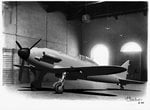How about a thread for the wunder aircraft of all WW2 combatants, not just Luft 46 projects?
Here are some:

Miles Libellula Heavy bomber project
http://www.miles-aircraft.com/Projects_libellula_heavy_bomber.html
and a prototype that flew

Miles M 39 Libellula
http://airwar.valka.cz/muzeum/britanie/m_39/default.htm



B&V MGRP
http://www.luft46.com/bv/bvrmist.html

Airspeed AS 31
http://www.geocities.com/Heartland/Village/4082/brit/odd_air.htm

Armstrong Whitworth 2 seat day night fighter

Boulton Paul P92 2 seat day night fighter

Boulton Paul P 99
Twin boom, one tail

Armstrong Whitworth AW 54A naval reconnaissance aircraft
an unusual trainer

General Aircraft G.A.L. 33 Cagnet
http://www.jaapteeuwen.com/ww2aircraft/html pages/GENERAL AIRCRAFT GAL33 CAGNET.htm
Junkers Ju322

http://www.geocities.com/hjunkers/ju_ju322_a1.htm
http://www.fortunecity.com/tattooine/farmer/120/322.html
http://www.warbirdsresourcegroup.org/LRG/ju322.html
Here are some:

Miles Libellula Heavy bomber project
http://www.miles-aircraft.com/Projects_libellula_heavy_bomber.html
and a prototype that flew

Miles M 39 Libellula
http://airwar.valka.cz/muzeum/britanie/m_39/default.htm
Miles offered the Miles M.39 Libellula bomber, ultimately envisaged as powered by three jet engines
B&V MGRP
This project was designed to be carried to within 290 km (180 miles) of the target by a Do 217 bomber. The carrier aircraft would go into a shallow dive to allow for ignition of the rocket's ramjet. The pilot would then locate the target by radar and release the main rocket in a ballistic trajectory. To help alleviate the calculated G forces (20 G), the pilot was in a prone position and was fitted with a shock absorber harness. The aircraft then ignited its own ramjet for the flight back to base.
http://www.luft46.com/bv/bvrmist.html

Airspeed AS 31
http://www.geocities.com/Heartland/Village/4082/brit/odd_air.htm
The British specification 35/35 was for an experimental high-speed aircraft with the option of turning it in to an 8-gun fighter, as in the Hurricane Spitfire.
There were four firms who replied to this specification the most un-conventional was the Airspeed A.S.31 which was a tractor monoplane in which the tailplane, on twin metal booms, carried the pilot in an eggshaped nacelle. No rudder or fin surface was indicated on the general arrangement drawing. Split flaps were fitted across the trailing edge of the wing between the booms, with wide-span ailerons outboard of the booms. A widetrack undercarriage was depicted . The aircraft was to be powered by a Rolls-Royce Merlin E engine. No details of its potential performance are recorded. Its wing span was 33 ft. and its length 29.5 ft.
The other contenders were the Bristol 151 single seat monoplane, powered by a Bristol Hercules engine. Its speed, with 100-octane fuel, was estimated to be 440mph. The General Aircraft GAL.28 was a single-seat aircraft , powered by a single Hercules engine, with a wing of variable area. The Hawker design was a Hurricane variant.
The Specification not proceeded with.

Armstrong Whitworth 2 seat day night fighter

Boulton Paul P92 2 seat day night fighter

Boulton Paul P 99
Twin boom, one tail

Armstrong Whitworth AW 54A naval reconnaissance aircraft
an unusual trainer
General Aircraft G.A.L. 33 Cagnet
http://www.jaapteeuwen.com/ww2aircraft/html pages/GENERAL AIRCRAFT GAL33 CAGNET.htm
Junkers Ju322
http://www.geocities.com/hjunkers/ju_ju322_a1.htm
http://www.fortunecity.com/tattooine/farmer/120/322.html
http://www.warbirdsresourcegroup.org/LRG/ju322.html
This unfortunate German glider of 1941 had a hilarious history. The Nazis ordered the Junkers company to produce 200 all-wood assault gliders, they were to be used in the invasion of Britain in the same role as the Messershmitt 321. {See my entry on the Me 323 for details.} Junkers had to start from scratch, the company had abandoned wood construction years before. They wound up with a 203 foot flying wing with a conventional tail that loaded cargo through the "nose". During loading tests a light tank crashed through the floor and it had to be strengthened, reducing payload by 20 percent. On it's first flight test a Ju 90 tow plane laboured to pull it into the air, barely making it before the end of the runway. The Mammut then jettisoned it's wheeled take-off trolley, which smashed itself into fragments. The poor pilot had other things to worry about as the unstable glider began to pitch up violently, putting the tow plane into a full-power dive. In desperation the Mammut pilot cut loose the tow and the glider straightened out and landed in a field nearby. Two weeks later it was towed back to the flying field by the tanks it was supposed to carry. The project was cancelled and the rest of the 98 gliders being built were cut up for firewood. The above picture may show it after it's first flight.




